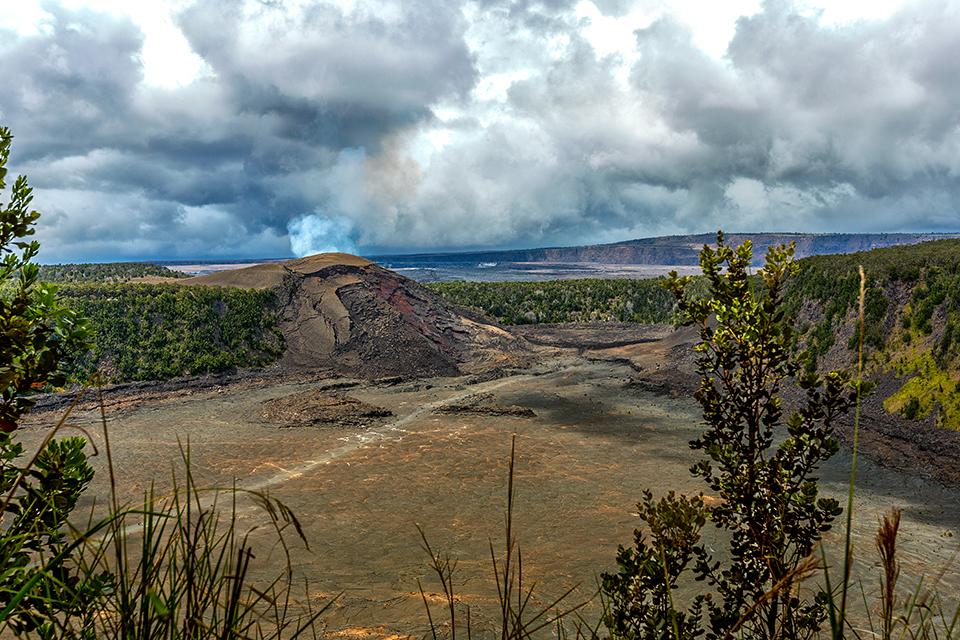
Imagine a lake of roiling, bright yellow-orange lava with a molten fountain gushing 1,900 feet into the sky. Now, imagine a calmer day much later, during which you walk upon a slightly undulating, smoothed solid rock expanse where that lava lake once sloshed.
Steeply-sloping walls blanketed with rain forest vegetation rim this now-solid lake edged with chunky blocks of cinder and blobs of fused molten lava called “welded spatter,” which broke apart” into “coarse jagged pieces of rock.” A tall cinder cone, still steaming in places, flanks your right as you walk across the “lake” toward the other side, guided by rock cairns called “ahu.” That’s the experience hiking the Kīlauea Iki Trail in Hawai’i Volcanoes National Park. Of all the trails in this volcanic national park, the Kīlauea Iki Trail is a must-do for your bucket list. You’ll experience both the park’s rain forest environment and a reminder of Pele’s fury while wandering the remains of what was once an active eruption and churning lava lake.
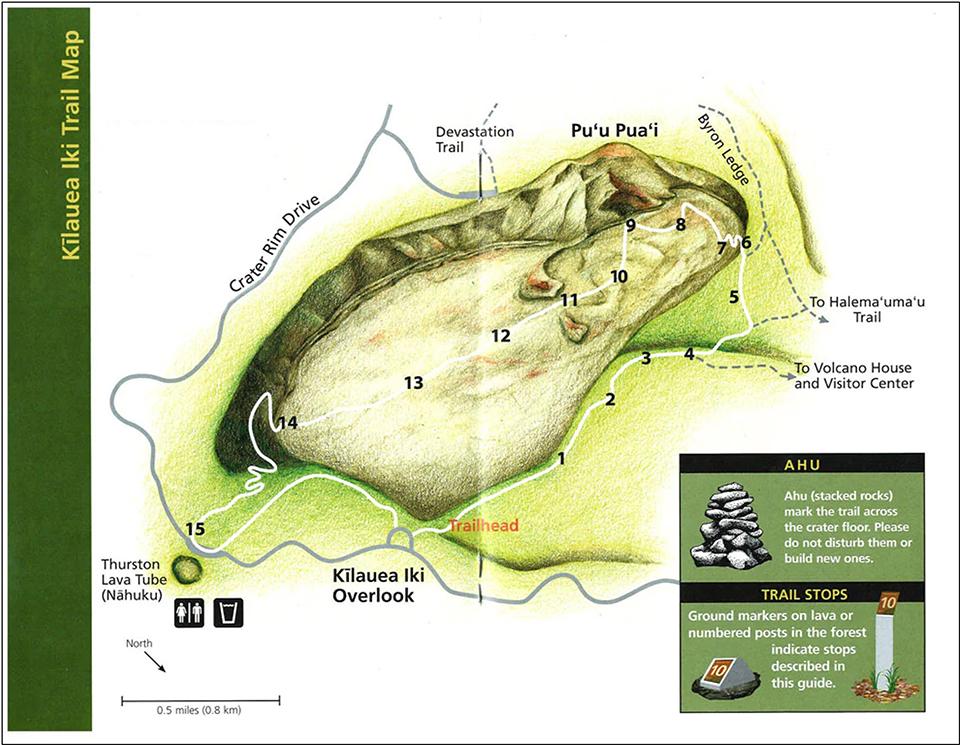
Kilauea Iki Trail map, Hawai'i Volcanoes National Park / modified NPS graphic from the trail guide
Start your hike early in the day to escape midday's high heat, no matter which of the three trailheads you embark upon. The shortest roundtrip hike is the 3.3-mile loop from the Kīlauea Iki Overlook. If you don’t feel like searching for a space at this overlook’s small parking lot, you might want to begin your hike from the Kīlauea Visitor Center for a 5.3-mile roundtrip “cherry stem” and loop. If you hanker a longer workout, there’s the 6-mile roundtrip Devastation Trailhead start, “allowing you to hike not only the Kīlauea Iki loop but also Uēaloha (Byron Ledge) and Nāhuku Lava Tube all in one hike.”

The Kīlauea Iki Trail descends into the rain forest environment, Hawai'i Volcanoes National Park / Rebecca Latson
If you choose the shorter of the three routes, make certain you arrive early in the morning (6 a.m. - 7 a.m.) to snag a parking spot at the overlook. From there, you’ll descend into and through a lush green rain forest replete with large and small ferns, moss, trees, and (unfortunately) the invasive Himalayan (kahili) ginger, a fast-spreading plant “so thick that the seeds won’t even get to the ground,” preventing growth of native ʻŌhiʻa Lehua and ferns.
Gaps in the vegetation allow you to view the faint trail across the hardened lava lake.
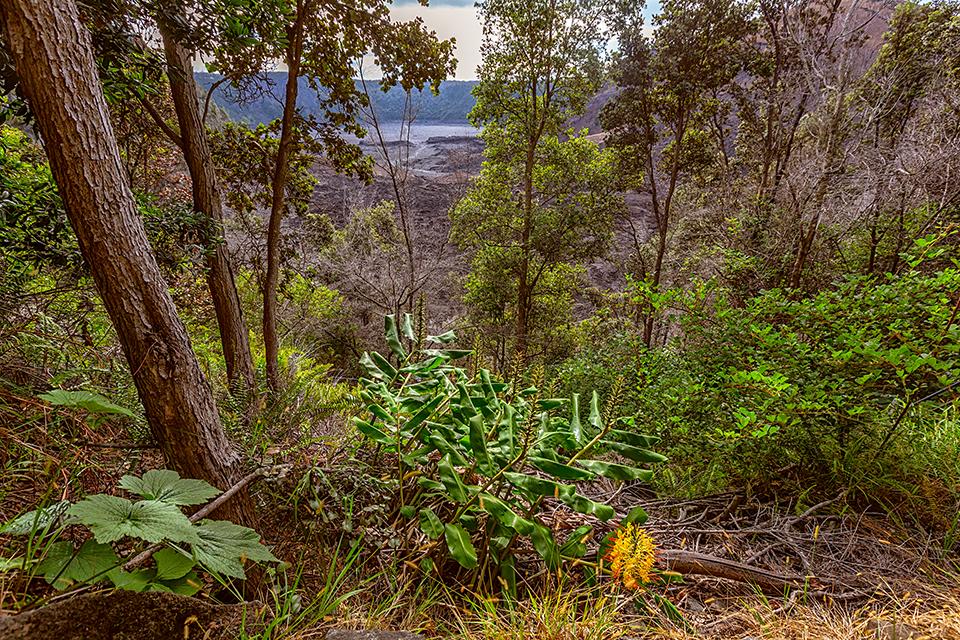
Invasive ginger in the foreground and a view of the Kīlauea Iki Trail beyond, Hawai'i Volcanoes National Park / Rebecca Latson
As you leave the rain forest’s verdant greenery and step down upon unyielding rock, you should watch your step to avoid tripping over the rocky blocky spatter chunks you’ll eventually leave behind to walk upon and across the wide expanse of smoother rock.

Hikers maneuvering over blocky spatter rock along the Kīlauea Iki Trail, Hawai'i Volcanoes National Park / Rebecca Latson

The rocky view along the Kīlauea Iki Trail, Hawai'i Volcanoes National Park / Rebecca Latson
Along the way, you’ll notice cracks in the ground from which green ferns and other plants sprout as they gain a toehold (root hold?) into this barren portion of the trail. You’ll also pass ʻŌhiʻa Lehua trees which might be sporting their bright red fringed blossoms. ʻŌhiʻa and ferns are early colonizers of recent lava flows, much like fireweed is one of the first to grow on scorched ground after a mountain wildfire.
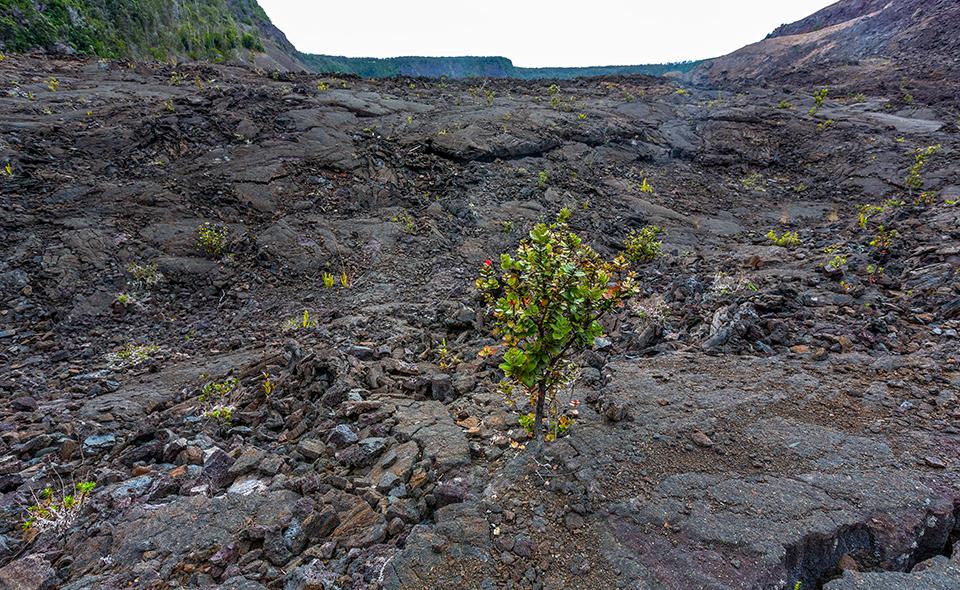
ʻŌhiʻa Lehua amid the barren landscape along the Kīlauea Iki Trail, Hawai'i Volcanoes National Park / Rebecca Latson
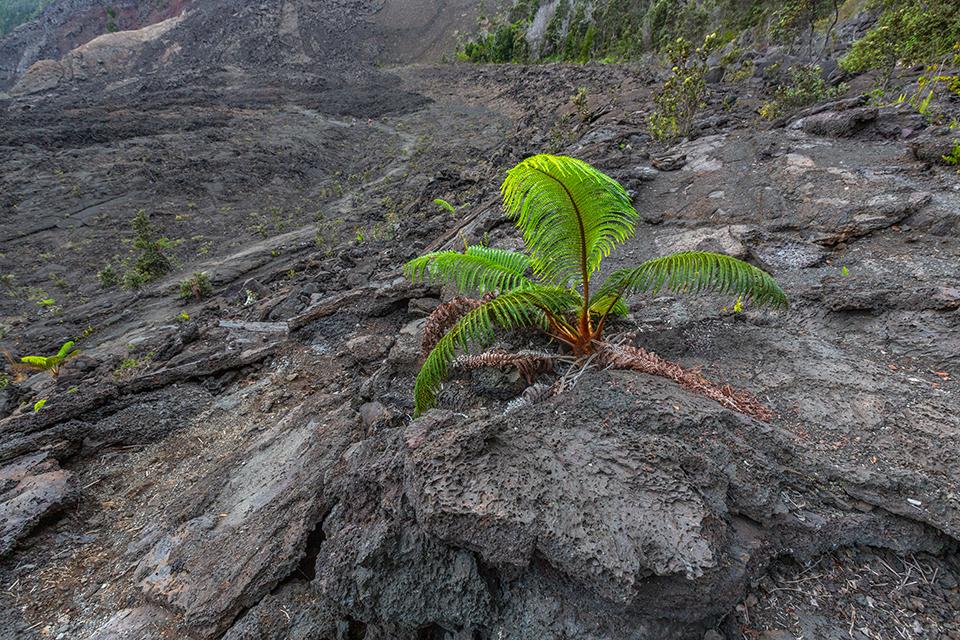
Green signs of life along the trail, Hawai'i Volcanoes National Park / Rebecca Latson
To the right of the trail is Pu’u Pua’i (Gushing Hill), the cinder-and-spatter cone created during a 1959 eruption beside the Kīlauea Iki crater.

Pu’u Pua’i and people on the Kīlauea Iki Trail, Hawai'i Volcanoes National Park / Rebecca Latson
Look up at the slump scars near the top of the cinder cone, produced when “slabs of congealed spatter … pulled by gravity” broke loose and slid down the cone, creating groove marks during the process. Notice the bright red and muted purple colors created from oxidation of iron minerals within the rocks.

Can you spot the slump scars on Pu’u Pua’i? Hawai'i Volcanoes National Park / Rebecca Latson
Still on uneven ground as you pass the cinder cone, flanked by buckled and cracked lava still steaming in places, you see the smoother surface ahead with a faint, lighter-colored trail across the surface. While it’s pretty difficult to lose your way, you’ll still be guided by ahu (cairns) lining either side of the trail. Remember to not disturb the ahu nor build another.

The author beside an ahu along the Kīlauea Iki Trail, Hawai'i Volcanoes National Park / Rebecca Latson

Looking back across the Kīlauea Iki Trail, Hawai'i Volcanoes National Park / Rebecca Latson
Ahu as tall as you mark the end of the lava lake portion of the trail and you’ll start the ascent back up the “bathtub ring” where the then-molten lava lake reached its highest level before subsiding. From there, a dirt trail leads you through more rain forest all the way up to the parking area.

Very tall ahu at trail's end, Hawai'i Volcanoes National Park / Rebecca Latson

Ascending the Kīlauea Iki Trail back up to the parking area, Hawai'i Volcanoes National Park / Rebecca Latson
Kīlauea Iki Trail earns it’s moderate-to-challenging difficulty rating due to steep trail in some places and sections of jagged lava rock waiting for the unwary to twist an ankle or trip and fall. Take the trail at a moderate-to-slow pace to enjoy the landscape and avoid any pitfalls. Remember to drink plenty of water along the hike. This is a wonderful trail offering an environmental microcosm of everything Hawai’i Volcanoes National Park offers. If you’d like to learn more about the formation of Kīlauea Iki and this trail, click here.
Traveler postscript: Editor-in-Chief Kurt Repanshek hiked the trail back in November 2021 and returned with this audio postcard.


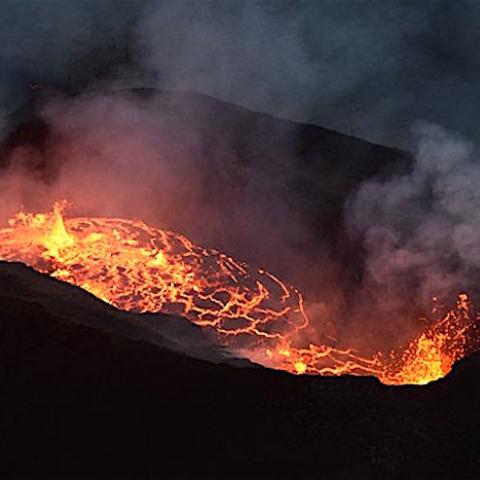

 Support Essential Coverage of Essential Places
Support Essential Coverage of Essential Places







Add comment